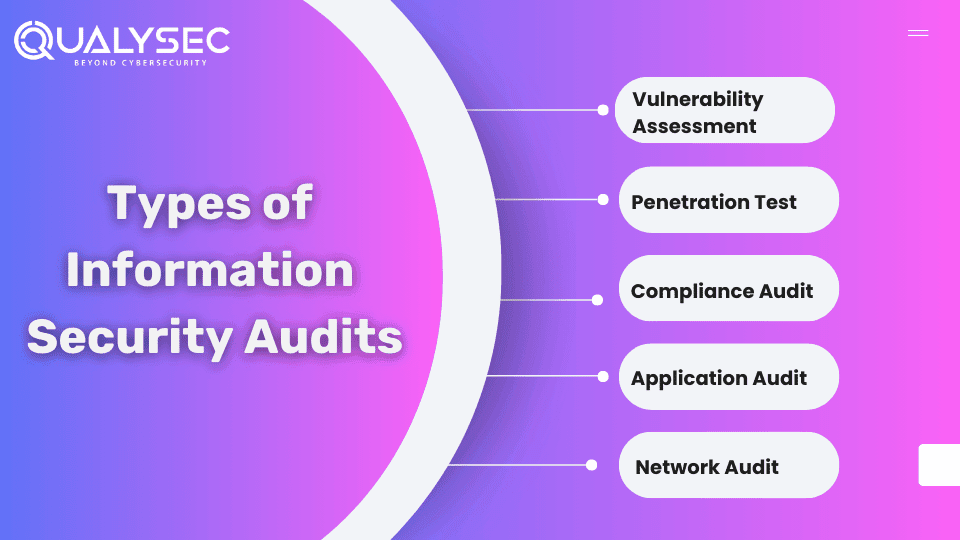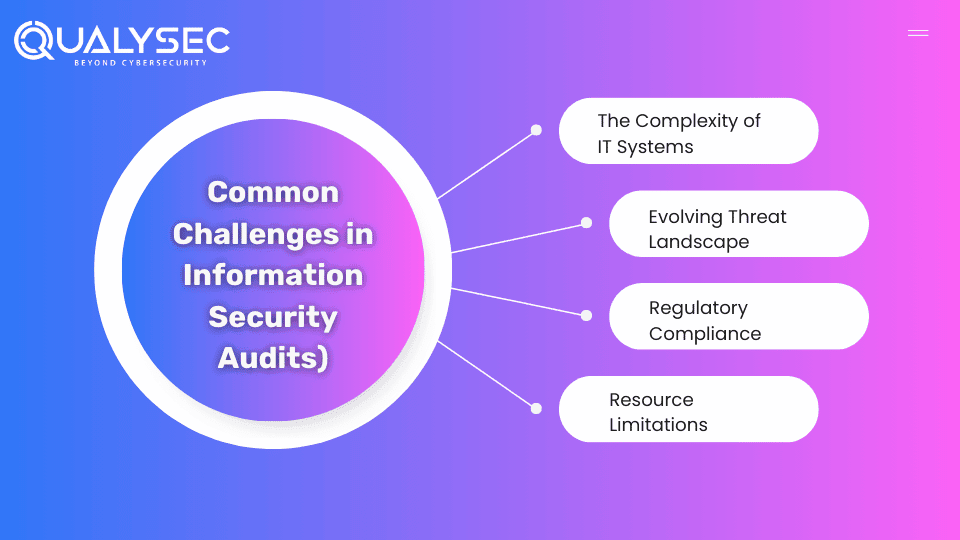Data security is crucial for small and large companies in today’s digital world. Therefore, Security audits are critical for ensuring data integrity, confidentiality, and availability. Information security audits evaluate an organization’s security practices to identify potential risks and improve security defenses against cyber threats.
Hence, this blog will cover the importance of information security audits, their diversity and dimensions, methods and guidelines for implementation, potential risks, and why every organization needs to pay attention to regular audits. Let’s begin this journey to strengthen your digital security.
Importance of Information Security Audits
Information security audits are necessary to identify weaknesses, maintain appropriate controls, and protect confidential data. They are used to identify existing vulnerabilities in an organization’s security posture before threats can leverage them. Furthermore, audit assists in maintaining compliance with industry regulations and standards to avoid legal penalties.
They also build trust among the stakeholders by showing their adherence to data protection. Additionally, audits offer practical recommendations for improving security mechanisms to reduce the risk of intrusions and maintaining business processes. Ultimately, they are crucial for a strong and sustained information security position.
Types of Information Security Audits
Information security audits guarantee information systems’ availability, confidentiality, and integrity. The several kinds of information security audits are listed below, along with their brief overview:
1. Vulnerability Assessment
Vulnerability assessment, a proactive process, is the key to identifying security risks in an information system with the help of automated tools. It detects weaknesses and classifies them, providing recommendations for remediation or mitigation. This proactive approach empowers organizations to prevent security vulnerabilities and attacks before they occur, putting them in control of their security.
2. Penetration Test
A pen test, or penetration test, is a simulated attack carried out to assess the security of an IT infrastructure. Attacking the system helps determine if any points of entry or weaknesses may lead to unauthorized access or other malicious activities. This practical approach enables organizations to assess their level of security but also instills confidence in their security measures, making them better prepared for an attack.
3. Compliance Audit
A compliance audit assesses an organization’s compliance with laws and regulations, including the GDPR, HIPAA, or PCI-DSS. It involves evaluating policies, procedures, and controls regarding specific legal and contractual requirements. Compliance audits help prevent legal breaches and improve security.
4. Application Audit
An application audit assesses the security of software applications (web and mobile). It involves code auditing, configuration scanning, and vulnerability testing. This audit helps ensure that applications are developed and deployed in a way that is secure and able to protect sensitive data from attackers.
5. Network Audit
A network audit analyzes an organization’s network by looking at its hardware, software, and communication standards. It detects vulnerabilities, misconfigurations, and unauthorized systems or connections. This audit offers a detailed insight into network security and provides organizations with the information they need to strengthen their defenses and secure their networks.
Are you willing to protect your application against online attacks? For sophisticated information security audits, get in touch with our experts. Protect your digital assets as soon as possible.
Talk to our Cybersecurity Expert to discuss your specific needs and how we can help your business.
Components of an Information Security Audit
An information security audit is a systematic review of an organization’s information systems and policies for compliance with relevant security standards and legal requirements. The components of an information security audit typically include:
1. Risk Assessment:
Analyzes and assesses information security threats affecting an organization’s information systems. Further, it evaluates each risk’s probability and potential ramifications to determine appropriate countermeasures for reducing the risks to the information systems.
2. Compliance Review:
The organization complies with relevant regulations, laws, and industry standards (e.g., GDPR, HIPAA, or ISO 27001) by reviewing the existing policies and procedures against these requirements.
3. Policy and Procedure Evaluation:
Review the current security policy and operational practices to identify the strengths and weaknesses of current security trends and best practices.
4. Vulnerability Assessment:
This includes information systems to find vulnerabilities, including outdated software applications, misconfiguration, or lack of patches for weakness.
5. Access Controls Review:
Evaluates how the management of information and systems provides appropriate security to users and prevents unauthorized access.
Information Security Audit Methodology
Information security audits is done in several steps, such as:
1. Information Gathering:
The first phase of the Information Security Audit is the collection of information. It includes current security protocols, network structures, and user access capabilities. Understanding data flow and responsibilities is critical to developing an effective audit plan.
2. Planning:
The planning process establishes the audit’s focus and analyses technical factors. The audit team develops action plans that focus on particular weaknesses. A well-designed audit plan focuses on scope, approach, evaluation standards, and other process components. All required tools and configurations are set for smooth operation.
3. Automated Tool Scan:
The audit team conducts intrusive scans using automated tools to establish surface-level vulnerabilities. Such scans copy the behavior of potential attackers and focus on application requests, allowing quick exposure of vulnerabilities. This proactive approach improves the overall security posture by eliminating such vulnerabilities and taking immediate action to address them.
4. Manual Penetration Testing:
Manual penetration testing focuses on auditing requirements and standards. Examples are injection testing, configuration reviews, and encryption testing. Vulnerabilities throughout the application are manually detected and analyzed intensively.
5. Reporting:
Systematic analysis further divides vulnerabilities into different categories to identify risk more accurately. A senior consultant analyses results and presents good reporting. Technical documentation provides information regarding security status and actionable advice to stakeholders.
Have you ever reviewed an actual information security audit report? To download one, click the link below; it will take a few seconds!
Latest Penetration Testing Report

6. Remediation Support:
The development team uses this report to address the vulnerabilities found. Penetration testers also guide and work with developers to mitigate the issues quickly. This approach is beneficial as it helps to enhance security and enables effective and efficient vulnerability management.
7. Retesting:
The given environment is retested to check whether all the vulnerabilities have been addressed or not. Additionally, retesting also confirms there are no new vulnerabilities.
8. LOA and Certificate:
Finally, a Letter of Attestation (LOA) is provided by the audit team. It carries different objectives, such as backing security levels and complying with audit requirements. This document ensures the stakeholders’ security and compliance adherence.
Best Practices for Conducting Information Security Audits
The best practices for conducting information security audits are as follows:
1. Thorough Scope Definition:
Determine the audit scope effectively and in a way that encompasses critical assets, systems, and processes. Documenting scope will ensure that all areas are covered and nothing has been missed that could negatively affect security posture.
2. Risk Assessment Framework:
Develop an adequate risk assessment process for identifying risks, determining levels of risk, and assessing impacts. This will allow you to identify the most critical vulnerabilities and dedicate resources to addressing them as quickly as possible to reduce the risk of security breaches.
3. Compliance Adherence:
Compliance with relevant regulatory standards and industry best practices is necessary. Establish a system for revising and enhancing the audit procedures to meet changing compliance mandates and ensure that the organization’s continuous improvement and compliance culture persists.
4. Thorough Documentation:
Keep accurate documentation of audit results, including vulnerabilities, corrective measures, and compliance status. As a result, this will ensure transparency, accountability, and a foundation for informed decision-making by stakeholders and regulators.
Common Challenges in Information Security Audits
Indeed, here are four common challenges encountered during an information security audit:
1. The Complexity of IT Systems:
Today, IT infrastructures are complex, comprising multiple connected systems, applications, and devices. The complexity of the architecture makes it difficult for auditors to understand and carry out an audit effectively and completely.
2. Evolving Threat Landscape:
Cyber threats constantly change as new attack methods and strategies appear. Security auditors must be well-informed about security threats to assess security controls. However, maintaining a proactive approach to evolving threats is expensive and time-consuming.
3. Regulatory Compliance:
Many industries are faced with strict rules on the protection of personal data. Security audits become more complicated if an organization is subject to standards like GDPR, HIPAA, or PCI DSS because auditors have to check that the organization meets requirements specific to its industry. Compliance can also be costly and difficult for organizations, mainly if they operate in different jurisdictions.
4. Resource Limitations:
Information security audits are complex processes that require significant time, manpower, and technology. However, many organizations struggle to allocate the resources to conduct comprehensive audits. Lack of funding, stretched-out security teams, and competing priorities can undermine the efficacy of audits and result in gaps in the security posture.
Why Companies Need Information Security Audits
Security auditing is critical for organizations to ensure their data is protected. These audits evaluate the efficiency of security mechanisms, determine risks, and confirm that security policies and practices meet the regulatory requirements and standards. Additionally, security audits can assist companies in preventing data breaches, and avoiding losses, and reputational disasters.
They help identify possible violations in systems and processes to prevent malicious activity. In addition, audits show that the company protects sensitive data, which builds the trust of customers, partners, and shareholders. Hence, information security audits are crucial to ensuring a business can run safely and securely.
Information Security Audit Checklist
Here’s a brief overview of each information security audit checklist:
1. Data Security:
This includes protecting confidentiality by encrypting data and restricting access, ensuring integrity using proper backup and disposal processes, and maintaining availability through continuous data access.
2. Network Security:
It addresses securing network architectures such as firewalls, intrusion detection systems, and virtual private networks to ensure against unauthorized access, breaches, attacks, and network outages, as well as security policy and standard compliance.
3. App Security:
This includes automating and integrating code review, vulnerability scanning, and penetration testing to identify vulnerabilities like injection, authentication, and configuration issues that diminish application resilience.
4. User Security:
This includes setting access control rights, implementing authentication methods, educating employees about safe security practices, and monitoring staff behavior to identify security violations.
Conclusion
Information security auditing is necessary in an increasingly globalized and data-driven society where physical and intangible resources are valuable to businesses and stakeholders. Thus, following best practices, addressing common challenges, and implementing structured methodologies can improve the security and resilience of organizations against cyber threats.
Adopting the defensive audit style reduces the risks associated with safeguarding sensitive information and encourages the organization to cultivate a culture of developing innovative mechanisms for information security.
FAQs
Q. What are the benefits of auditing in information security?
A. The auditing practice in information security maintains regulatory requirements, detects threats, measures risk, and enhances overall security. It improves accountability, identifies frauds, builds stakeholder trust, and helps address threats and risk management to increase cyber resilience.
Q. What is a security audit checklist?
A. A security audit checklist is a set of practices for systematically evaluating an organization’s security and its strengths and weaknesses. Moreover, it usually involves security features like network, data, and user security.
Q. What is the purpose of a security checklist?
A. A security checklist helps check the security of systems, networks, and processes in a structured way. Additionally, it helps identify weaknesses, implement security controls, and meet any standards or legislation requirements.










































































































































































































































































































































0 Comments